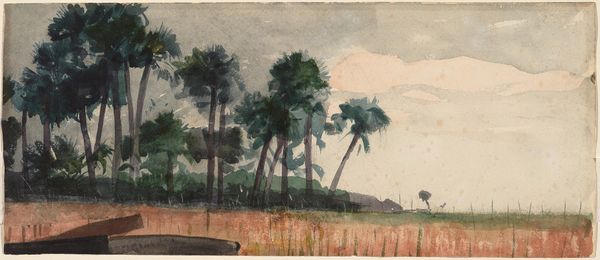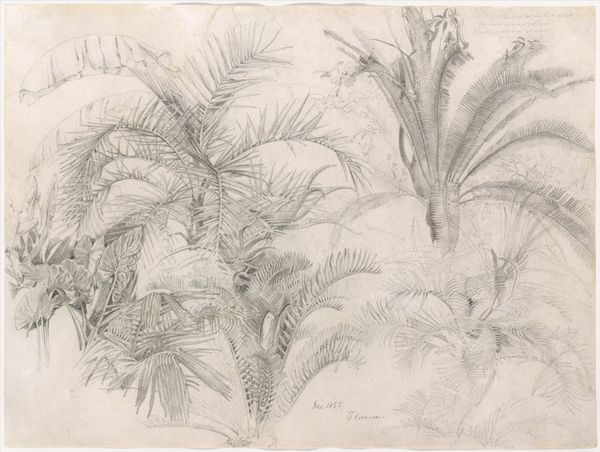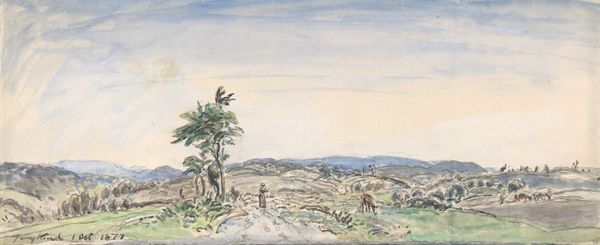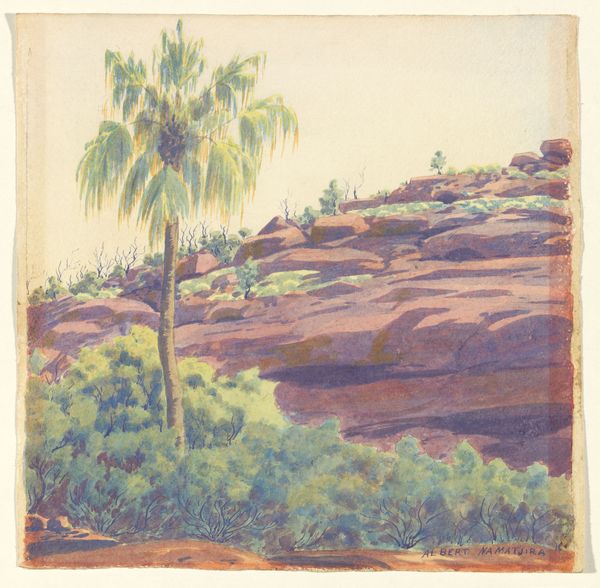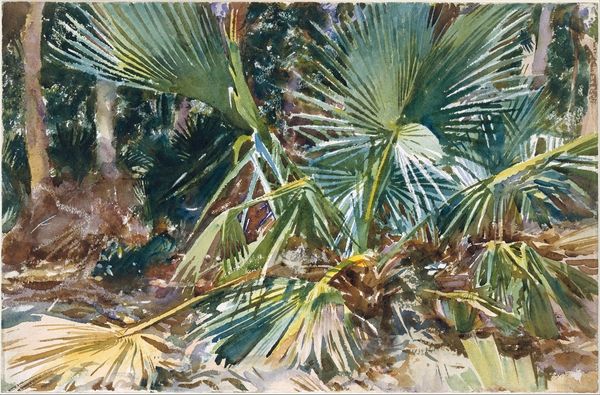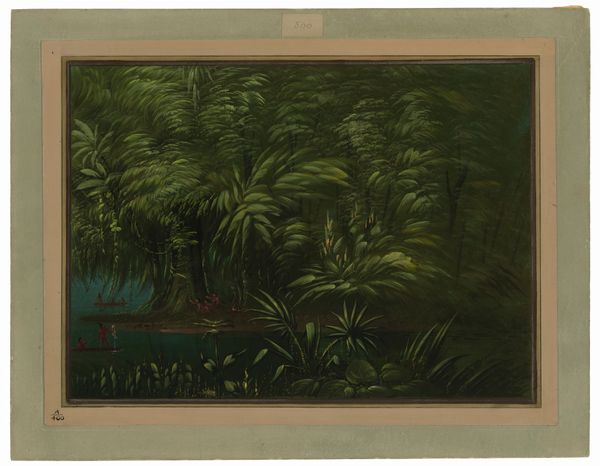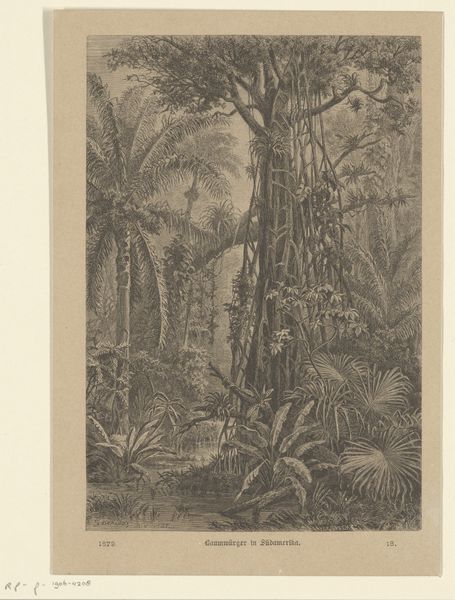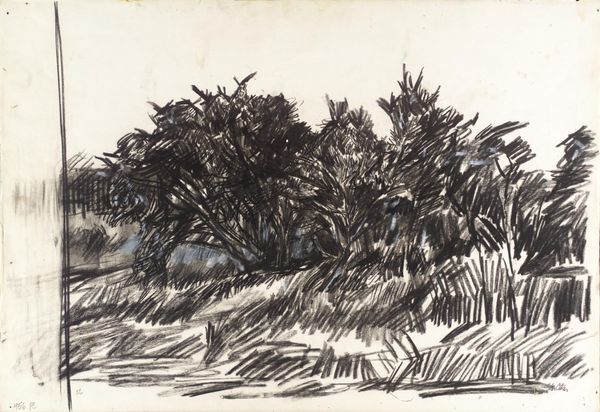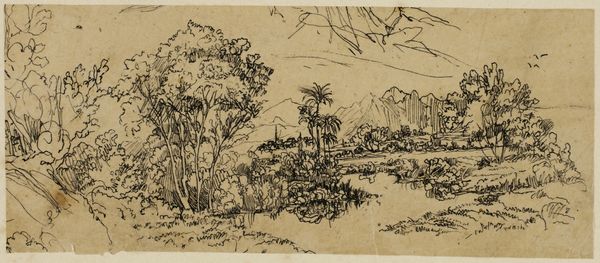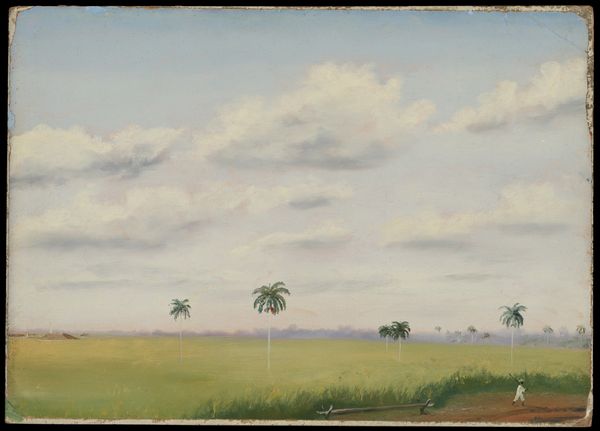
drawing, paper, chalk
#
17_20th-century
#
landscape illustration sketch
#
drawing
#
landscape
#
german-expressionism
#
nature colouring
#
paper
#
german
#
natural background
#
expressionism
#
chalk
#
watercolour bleed
#
watercolour illustration
#
natural palette
#
pale flat background
#
botanical art
#
natural environment
#
watercolor
Copyright: Public Domain
Curator: Pauline Kowarzik created this work, entitled "Palm Forest," in 1928. It resides here at the Städel Museum, a delicate balance of watercolor and chalk on paper. Editor: It feels like looking at a stage set – those layered greens and browns, the almost pastel sky. There's a definite sense of constructedness, not quite real, yet evocative. Curator: Precisely. The color palette, dominated by natural, earthly tones, is fascinating. The choice to work with both watercolor's bleed and chalk's matte surface, brings depth that complicates a single reading. Editor: Right. You have this push-pull effect. On the one hand, watercolor as a technique suggests spontaneity, sketching on location perhaps. But, then the execution feels incredibly deliberate, crafted. What labor went into achieving this 'natural' scene? The social element that I consider lies not in overt symbolism, but within the tension between nature and fabrication. Curator: Certainly, the art historical context is essential. As a work coming out of German Expressionism, “Palm Forest” is infused with emotion and a kind of existential response to modernity. But let's look at the way Kowarzik uses line; notice how the foliage and tree trunks aren't outlined. This blurring amplifies the mood. The form arises, in part, from that conscious fading or smearing effect. Editor: It prompts one to reconsider art's presumed divide, high art versus the supposedly "lower" forms. Here, Kowarzik embraces what has frequently been marginalized. Is that not a social statement, perhaps, through materials? Curator: An interesting reading of that approach. While that can't be discounted, I am inclined to return to a certain intentional artifice. There is something studied in that choice. The 'natural background' seems to fade intentionally to amplify that artificial effect, if you will. Editor: Perhaps our dialogue unveils an artistic practice in dialogue with itself, its means, and modes of production, no less so than its viewers. Curator: Yes, each approach opens ways into the conversation; allowing a full reading of Kowarzik's artistry, here in "Palm Forest."
Comments
No comments
Be the first to comment and join the conversation on the ultimate creative platform.
